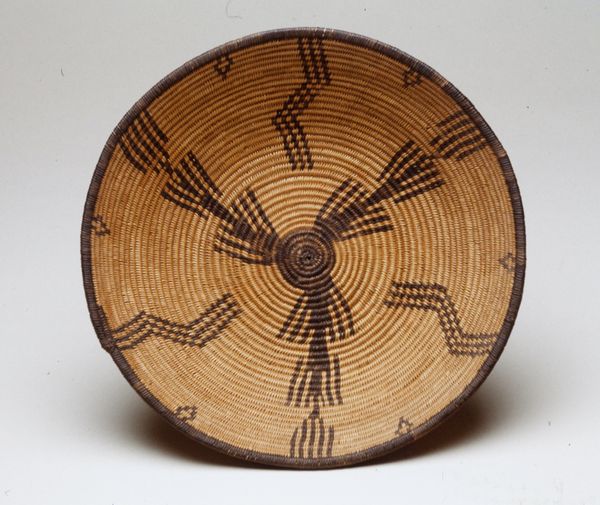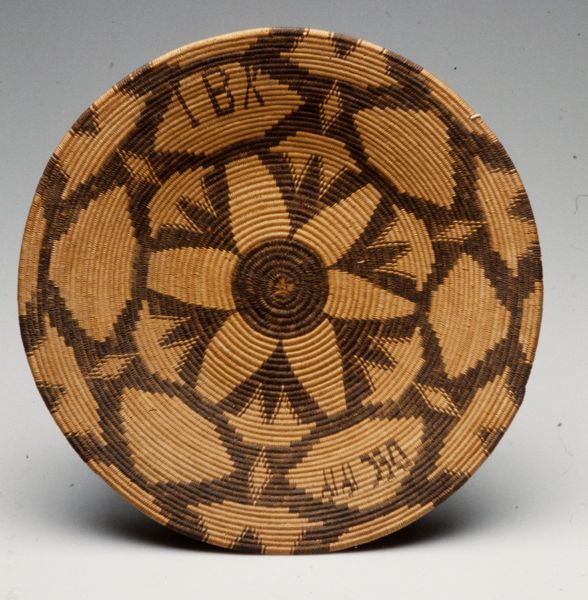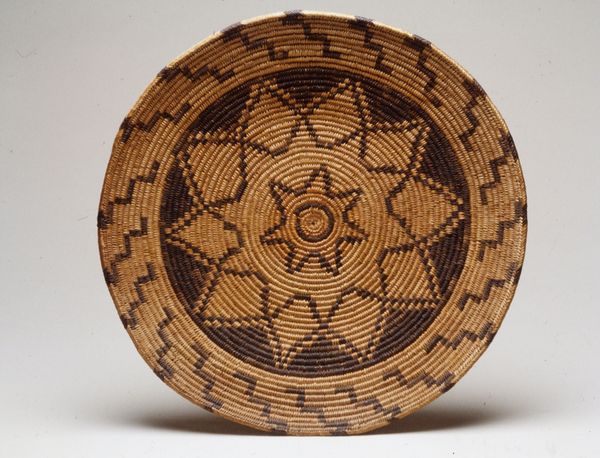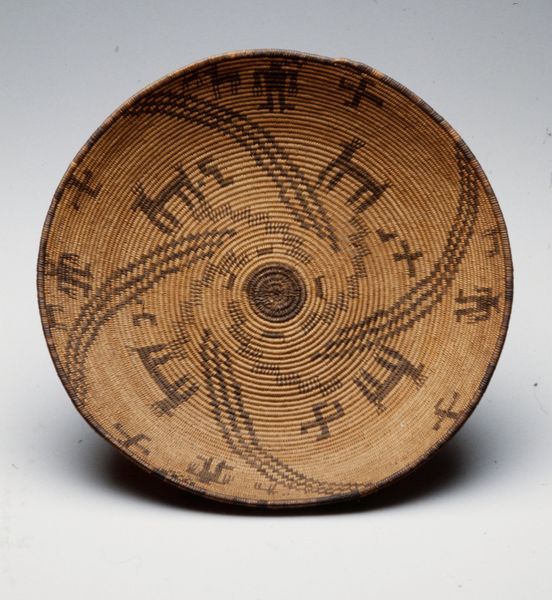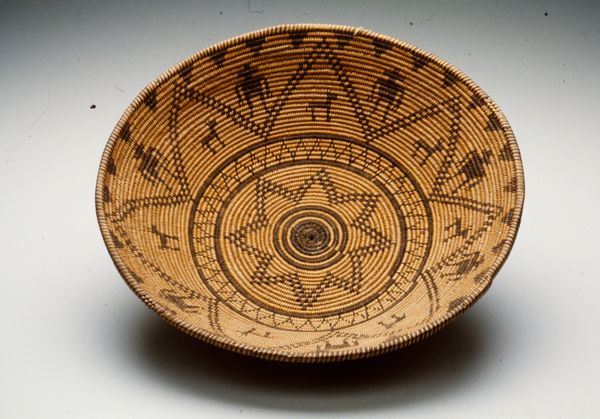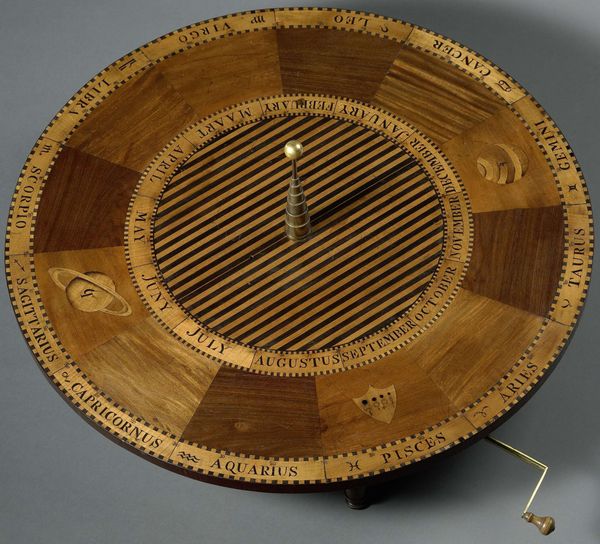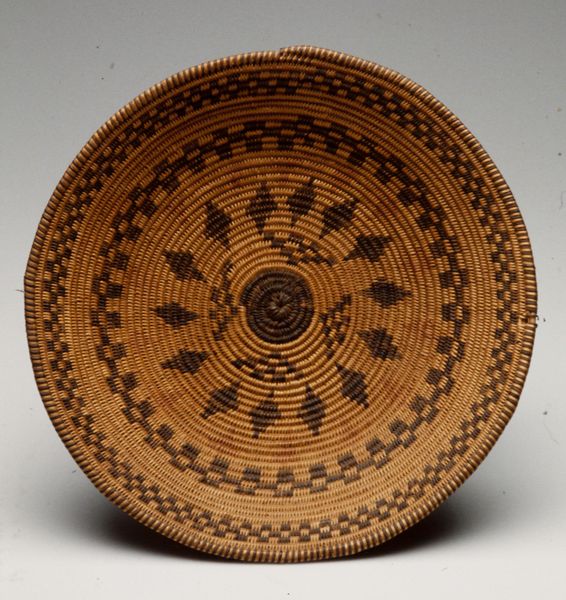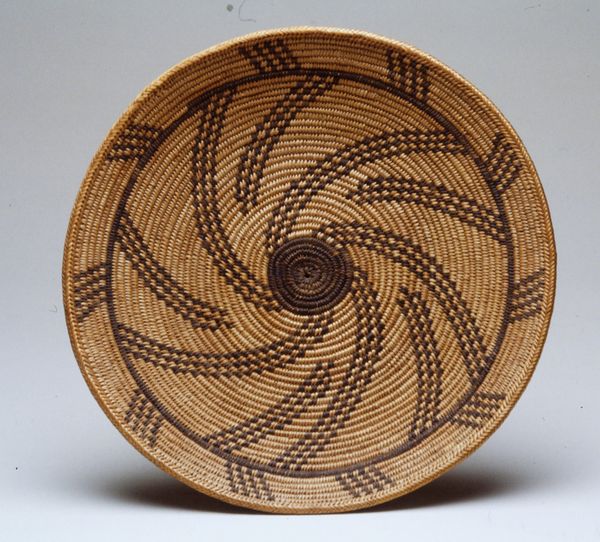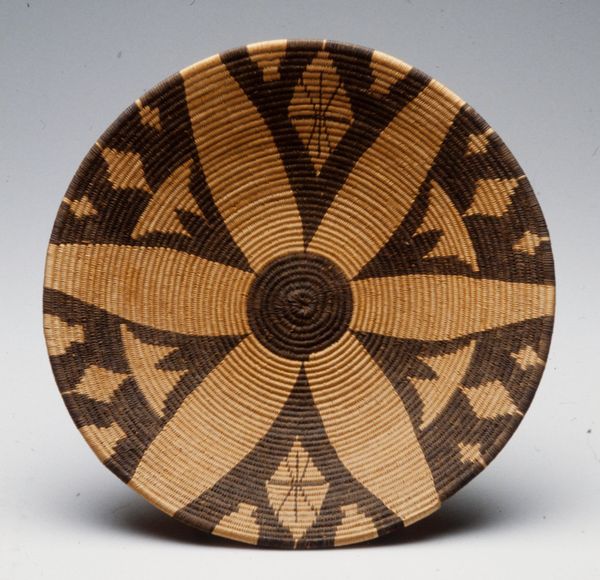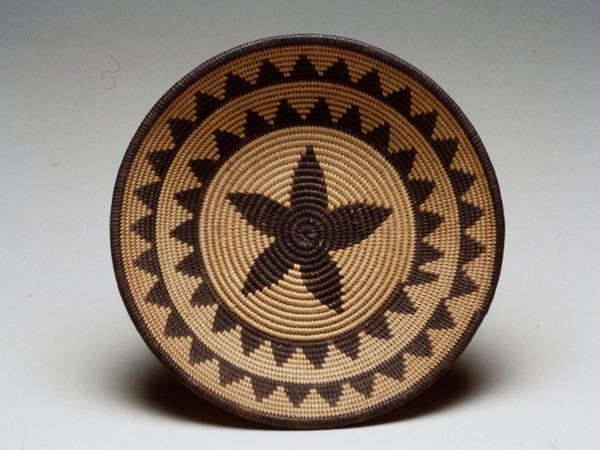
fibre-art, weaving, textile
#
fibre-art
#
pottery
#
weaving
#
textile
#
folk-art
#
geometric
#
ceramic
#
earthenware
#
indigenous-americas
Dimensions: 2 1/4 x 12 1/2 in. (5.72 x 31.75 cm)
Copyright: Public Domain
Curator: This intricate basket, created by an Indé (Apache) artist around the 20th century, showcases stunning weaving techniques. What strikes you first? Editor: Immediately, I'm drawn to the craftsmanship. The evenness of the weave, the tightness—it speaks to incredible skill and labor. What can you tell me about the materials and processes? Curator: Woven earthenware represents a bridge between functional object and art form. Considering this piece through an Indigenous lens, it symbolizes a complex interplay of utility and spirituality. How do you see that intersection reflected? Editor: The basket presents the concept of value and skill linked to this culture, emphasizing not just function, but social dynamics. This pushes against conventional categories separating "high art" from functional craft. What is the potential connection to gendered labour? Curator: Absolutely, these skills and labor typically are a women's domain within Indé society, speaking volumes about the economics of the communities and its legacy in social structure. The inclusion of geometric patterns further signifies coded forms of information within tribal structures. Do these geometric forms speak to these elements? Editor: Definitely. While seemingly decorative, they underscore an understanding of cultural narrative, memory and community embedded in functional items. In other words, this challenges our assumption that a basket only performs functional labor, that rather labor also holds embedded narrative content and collective effort. Curator: Exactly. It prompts us to question who gets to decide what's "art" and how historical power imbalances have often marginalized Indigenous artistic expressions. And those power imbalances manifest in representation, which brings me back to this work. Editor: Placing this basket within the social frame pushes me to reassess not just our interpretation of labor, but also of material culture, asking "what counts", for whom and how do we value non European modes of artistic and cultural production. Curator: Understanding how objects like this basket embody historical context, cultural significance, and resistance enriches our contemporary view of art. Editor: And understanding materiality provides an acute understanding of the labor required to produce an artistic object and how those histories and modes of production intersect in our understanding of material culture.
Comments
No comments
Be the first to comment and join the conversation on the ultimate creative platform.

